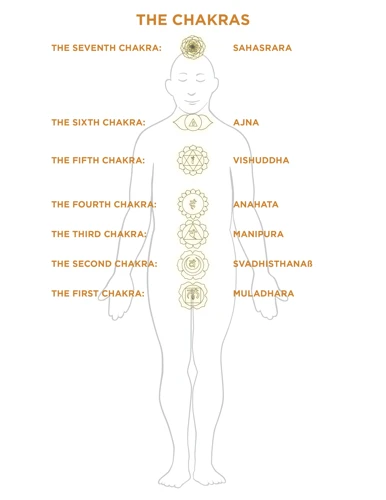The Basics of Tantra

Tantra is an ancient spiritual practice that originated in India centuries ago. It encompasses a variety of practices and beliefs that aim to help individuals connect with a higher power and attain spiritual awakening. At its core, tantra emphasizes the idea of using energy, both physical and spiritual, to attain a state of heightened awareness and consciousness.
One of the fundamental beliefs of tantra is that the divine exists in everything, including the human body. Tantra practitioners believe that our bodies and minds are interconnected and that harnessing our energy can lead to spiritual transformation. To achieve this, tantra incorporates a range of practices, including breathwork, meditation, mantra chanting, and physical postures, among others.
Unlike other spiritual practices that often focus on renunciation and detachment, tantra embraces the world and emphasizes the importance of finding spiritual enlightenment in everyday life. It teaches that by fully experiencing and embracing our senses, desires, and emotions, we can connect with the divine and achieve spiritual transcendence.
Tantric teachings also place great importance on the relationship between the masculine and feminine energies, often depicted as Shiva and Shakti. Shiva represents the masculine energy associated with consciousness and stillness, while Shakti represents the feminine energy associated with movement and power. Tantra teaches that the union of these energies leads to a state of spiritual harmony and balance.
Tantra is a complex and multifaceted practice that seeks to help individuals achieve a state of spiritual awakening by harnessing the power of the body and the mind. Its teachings emphasize the importance of embracing the world around us and finding spiritual transformation in everyday experiences.
The Role of Kundalini in Tantra
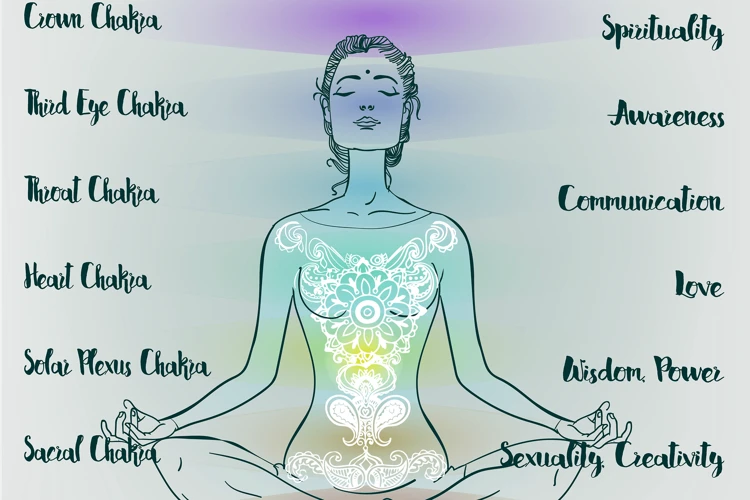
Tantra is a spiritual practice that focuses on awakening one’s inner energy, known as Kundalini. Kundalini, which is often referred to as the “serpent energy,” is said to be coiled at the base of the spine and can be awakened through various tantric practices. The purpose of awakening the Kundalini energy is to achieve spiritual enlightenment and connect with a higher awareness.
Kundalini in Tantra is seen as the key to unlocking the hidden potential of the body and mind. When awakened, Kundalini energy flows through the chakras, or energy centers in the body, purifying and balancing them. This leads to a heightened sense of awareness, self-realization, and a greater understanding of the interconnectedness of all things.
In Tantra, Kundalini is often symbolized by a coiled serpent resting at the base of the spine. The serpent is associated with transformation and rebirth, as shedding its skin represents a new beginning. Similarly, the awakening of Kundalini energy is said to bring about a spiritual rebirth and transformation in the practitioner.
However, the awakening of Kundalini energy must be approached with caution, as it can be a powerful and overwhelming experience. It is important to have proper guidance and support from an experienced practitioner to ensure safe and effective awakening.
The role of Kundalini in Tantra is to unlock the hidden potential within each individual, leading to greater self-realization and spiritual growth. By awakening this inner energy, practitioners can connect with a higher awareness and attain a deeper understanding of their place in the universe.
Types of Tantra Practices
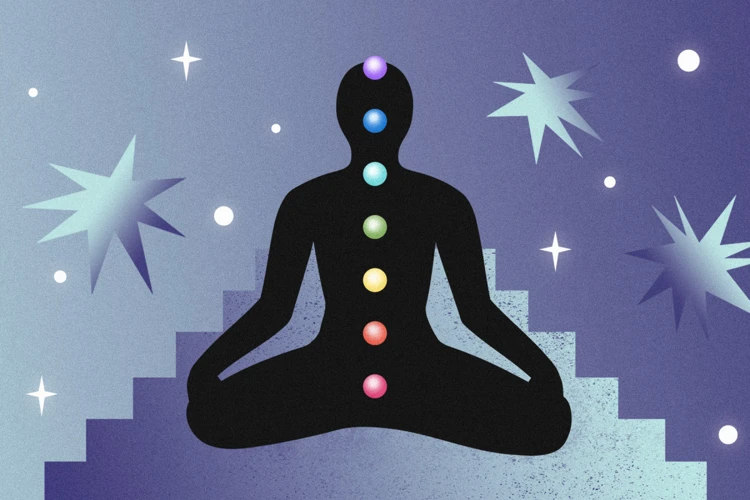
Tantra is a spiritual practice that incorporates various techniques and rituals to connect with the divine. These practices involve the use of mantras, yantras, mudras, meditation, breathwork, and ceremonies. Each of these techniques plays a significant role in awakening the Kundalini energy within the body. In this section, we will explore the different types of Tantra practices in detail and how they can help one achieve a harmonious state of mind, body, and spirit. From the use of symbolic geometry to the power of breath, each technique offers a unique approach to Tantra practice. So, let’s dive into the fascinating world of Tantra practices and their effects on Kundalini Awakening.
Mantra, Yantra, and Mudra Practices
Tantra practices often involve the use of specific tools to enhance the awakening of Kundalini energy. Mantra, Yantra, and Mudra practices are three of the key techniques used to achieve this.
Mantra Practices: A mantra is a word, phrase or sound that is repeated either externally or internally during meditation. Mantras are believed to have a powerful effect on the mind and can lead to profound states of relaxation and concentration. When used in conjunction with Tantra, mantras are often repeated during sexual activity to enhance intimacy, connection, and the flow of energy.
Yantra Practices: Yantras are sacred geometrical designs that are used as tools for meditation. They are believed to have a specific energy or vibration that can help to awaken the Kundalini. Yantras are often used in combination with specific mantras, and traditional tantric practitioners believe that the combination of the two can lead to deep states of meditation and profound spiritual insights.
Mudra Practices: Mudras are specific hand gestures that are used to direct energy flow throughout the body. They are believed to have a powerful effect on the energy channels within the body and can be used to stimulate the flow of Kundalini energy. Mudras are often used in conjunction with specific mantras or yantras, and can also be used during sexual activity to enhance pleasure and connection.
All three of these practices are powerful tools for enhancing the awakening of Kundalini energy. However, it is important to note that they should be practiced under the guidance of an experienced teacher to ensure safety and effectiveness.
Tantra Meditation
Tantra meditation is one of the most popular practices among practitioners for Kundalini awakening. It helps to calm the mind, reduce stress, and enhance mental clarity. There are different types of tantra meditation, each with its own unique benefits. Here we will discuss some of the most commonly practiced forms of tantra meditation:
| Type of Tantra Meditation | Benefits |
|---|---|
| Chakra Meditation | Helps balance the energy centers in the body and promotes Kundalini awakening. |
| Vipassana Meditation | Increases self-awareness and aids in the release of negative emotions. |
| Zen Meditation | Helps achieve a state of no-mind and promotes inner peace. |
| Loving-Kindness Meditation | Enhances feelings of compassion towards oneself and others. |
During tantra meditation, it is essential to focus on your breath and remain present in the moment. The practice involves sitting in a comfortable position, preferably with legs crossed, and closing your eyes. You can also use a mantra, which is a word or phrase repeated out loud or silently. Mantras help to focus the mind and promote relaxation.
As you progress in your practice, you may experience various sensations, such as tingling or pulsing, in different parts of your body. These are typical Kundalini awakening symptoms and are a sign that your energy is flowing freely.
Tantra meditation is a safe and effective way to awaken your Kundalini energy. It is essential to remember that the practice should be approached with patience and caution, and it is crucial to seek guidance from an experienced teacher before starting.
Tantric Breathwork
Tantric breathwork is a vital aspect of Tantra, and it involves specific breathing techniques aimed at unblocking energy centers and awakening Kundalini. There are different types of Tantric breathwork, but they all serve to increase awareness, raise energy levels, and promote relaxation.
1. Kapalabhati: This is one of the most common Tantric breathwork practices that involves rapid and forceful exhales. It helps to clear the nasal passages, increase oxygen flow, and invigorate the body.
2. Nadi Shodhana: This practice involves alternate nostril breathing and aims at balancing the two hemispheres of the brain. It helps to calm the mind, reduce anxiety, and improve focus.
3. Bhastrika: This is a powerful breathing technique that involves rapid inhalations and exhalations. It helps to energize the body, improve blood circulation, and clear the mind.
4. Ujjayi: This practice involves breathing through the nose while constricting the throat, producing an ocean-like sound. It helps to calm the nervous system, reduce stress, and promote relaxation.
5. Sheetali: This practice involves rolling the tongue and inhaling through the mouth, creating a cooling and soothing effect on the body. It helps to reduce body temperature, calm the mind, and alleviate stress.
Tantric breathwork can sometimes trigger intense Kundalini awakening symptoms, such as raised body temperature, sensations in the spine, or visions and hallucinations. It is essential to practice under guidance, start slowly, and listen to your body. Incorporating self-care practices such as proper hydration, rest, and a balanced diet is also crucial for safe and effective Kundalini awakening through breathwork.
Tantric Rituals and Ceremonies
Tantric rituals and ceremonies are an essential aspect of Tantra practice. These rituals and ceremonies are designed to help practitioners connect with the divine energy and experience a deeper level of consciousness. There are various Tantric rituals and ceremonies that can be performed, each with unique benefits.
1. Puja: Puja is a ritual used to honor deities and other sacred objects. During this ritual, practitioners create an altar with offerings such as flowers, incense, and food. The practitioner then chants mantras and invites the deity to come and accept their offerings.
2. Yagna: Yagna is a sacrificial ritual in Tantra that involves offering special substances such as ghee, sesame seeds, and grains into a sacred fire. The fire is believed to carry the offerings to the divine beings.
3. Tattva Shuddhi: Tattva Shuddhi is a purification ritual that involves cleansing the elements within the physical body. This ritual is essential before engaging in any other Tantra practices.
4. Chakra Puja: Chakra puja is a ritual that involves the worship of the chakras, which are energy centers in the body. During this ritual, practitioners use various techniques to stimulate and balance the chakras.
5. Kali Puja: Kali Puja is a ritual that involves worshiping the goddess Kali, who represents destruction and transformation. During this ritual, practitioners chant mantras, offer flowers and other offerings, and perform various other rituals.
6. Mahamrityunjaya Mantra: The Mahamrityunjaya Mantra is a powerful mantra chanted to overcome death and ensure longevity. This mantra is often chanted during Tantric rituals and ceremonies to promote well-being and healing.
Tantric rituals and ceremonies can be an incredibly powerful tool in the Kundalini awakening process. However, it is essential to find a qualified teacher who can guide practitioners through these practices safely and effectively.
Effects of Tantra Practices on Kundalini Awakening Symptoms
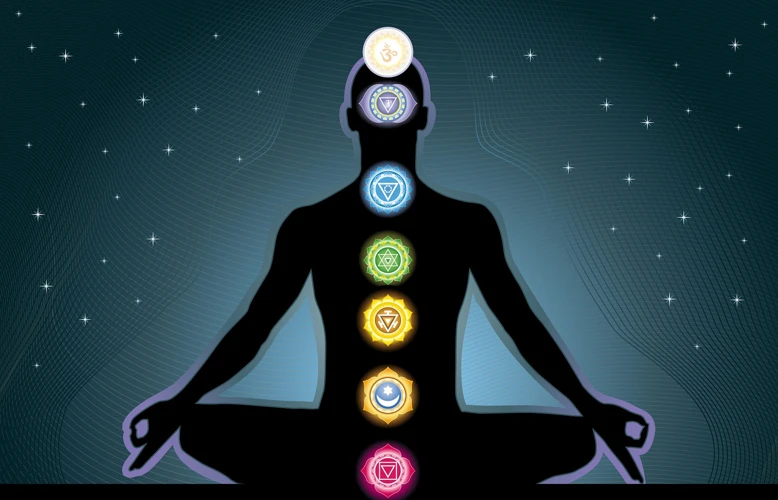
As one delves deeper into the practices of Tantra and Kundalini awakening, they may experience a range of symptoms that can be both exciting and overwhelming. These symptoms are a result of the energy awakening and rising through the body. The effects of various Tantra practices on these Kundalini awakening symptoms can range from heightened energy levels to profound visions and hallucinations. Understanding the potential effects of these practices can help individuals navigate their Kundalini awakening journey with more clarity and awareness.
Raised Body Temperature
One common symptom experienced during Kundalini awakening is a raised body temperature. This can be attributed to the activation of the body’s natural energy centers, or chakras, as well as the increased flow of energy throughout the body.
As energy moves through the chakras, it can create a feeling of warmth or heat in the body. This can be a pleasant sensation, but it can also be uncomfortable or even painful in some cases.
It’s important to note that a raised body temperature during Kundalini awakening is not the same as a fever or illness. It is a natural part of the awakening process and should not be a cause for concern as long as it is not accompanied by other serious symptoms.
To alleviate discomfort caused by a raised body temperature, practitioners of Tantra often incorporate cooling practices, such as pranayama (breathing exercises) or shitali (cooling breath). They may also avoid foods or activities that can increase internal heat or inflammation in the body.
The following table summarizes the causes and management of raised body temperature during Kundalini awakening.
| Causes of Raised Body Temperature | Management Strategies |
|---|---|
| Activation of chakras | Incorporate cooling practices such as pranayama or shitali |
| Increased flow of energy through the body | Avoid activities that increase inflammation or internal heat |
| Natural part of the awakening process | Stay calm and centered; trust in the process |
By understanding the causes of raised body temperature during Kundalini awakening and implementing appropriate management strategies, practitioners can navigate this symptom safely and effectively. It’s important to stay grounded and connected to the body, and to seek guidance from an experienced practitioner if needed.
Sensations in the Spine
During a Kundalini awakening, one of the most common experiences reported by practitioners is the sensation of energy moving up the spine. This sensation can manifest in a variety of ways, including tingling, heat, pressure, or even pain.
Some practitioners describe the sensation as a “snake-like” movement up their spine, which is why Kundalini is often referred to as the “Serpent Power.” This movement of energy is believed to represent the awakening of the dormant Kundalini energy within the practitioner, and it can be a powerful and transformative experience.
However, these sensations in the spine can also be unsettling or even painful for some practitioners, especially if they are not prepared for the intensity of the experience. It’s important to approach Kundalini awakening with caution and to be mindful of any physical sensations that arise during the process.
One way to mitigate these sensations is through the practice of specific yoga poses and movements that are designed to help activate and balance the energy centers in the body. These poses, such as Cobra, Upward-Facing Dog, and Camel, can help to open up the spine and release any blockages that may be inhibiting the flow of energy.
Additionally, some practitioners find that certain breathing techniques, such as pranayama, can help to regulate the flow of energy and reduce any feelings of discomfort or unease. It’s important to approach these practices with respect and to seek guidance from an experienced practitioner if you are new to Kundalini or are experiencing any challenges during the awakening process.
Ultimately, the sensations in the spine that arise during Kundalini awakening can be a powerful symbol of transformation and growth. By cultivating awareness and respect for these sensations, and by incorporating specific practices and techniques to support the process, practitioners can navigate the challenges of Kundalini awakening in a safe and effective way.
High Energy Levels
During kundalini awakening, many practitioners experience a surge of high energy levels throughout their bodies. This energy is usually described as a warm or tingling sensation, and it can be very intense. Here are some of the ways that different tantric practices can help to manage these high energy levels:
- Tantra Meditation: Certain forms of meditation are designed to help regulate the flow of energy in the body, making it easier to manage surges of excess energy.
- Tantric Breathwork: Similarly, specific types of pranayama (breathing exercises) are believed to help circulate energy throughout the body more efficiently, reducing feelings of overwhelm or frustration.
- Tantric Rituals and Ceremonies: Some tantric rituals are designed to channel excess energy in a productive way, such as through chanting, movement, or specific visualizations.
- Self-Care Practices: Finally, it’s important to prioritize self-care during kundalini awakening. Eating nourishing foods, staying hydrated, and getting plenty of rest can all help to manage high energy levels and prevent burnout.
It’s worth mentioning that while high energy levels can be a positive sign of kundalini awakening, they can also be overwhelming or even frightening. Practitioners should take care to tune into their bodies and listen to their internal cues to prevent overexertion or injury.
Visions and Hallucinations
During Kundalini awakening, practitioners may experience visions and hallucinations as a result of the heightened sensory experiences and expanded consciousness that come with the process. These experiences can be both exciting and disorienting, and it’s important to approach them with a sense of curiosity and openness.
| Visions | Hallucinations |
|---|---|
| Visions are experiences that appear as if you’re seeing images or scenes that are not actually present in your physical environment. They can be vivid and colorful, and may or may not make coherent sense. | Hallucinations, on the other hand, are experiences that are not based in reality. They can be visual, auditory, or sensory in nature, and may feel confusing or overwhelming. |
| Kundalini awakenings can bring about a range of visions, which may include images of spiritual figures, landscapes, or abstract patterns and shapes. | Hallucinations may be more intense and may feel frightening or disturbing. They may include seeing or hearing things that aren’t there, feeling sensations that don’t have a physical basis, or experiencing distorted perceptions of time and space. |
| Visions can be a powerful tool for spiritual growth and exploration, allowing practitioners to tap into their creativity and intuition. | Hallucinations, on the other hand, can be distressing and may indicate the need for additional support or guidance from a mental health professional. |
| It’s important to approach visions with a sense of wonder and curiosity, and to reflect on what they might be trying to communicate. | If you experience hallucinations during Kundalini awakening, it’s important to speak with a healthcare professional to rule out any underlying medical or mental health conditions. |
Visions and hallucinations can be a normal part of the Kundalini awakening process. However, it’s important to approach these experiences with care and to seek support as needed. By staying grounded and practicing self-care, practitioners can integrate these experiences into their spiritual journey and emerge from the process with a deeper understanding of themselves and the universe around them.
Challenges Encountered During Kundalini Awakening
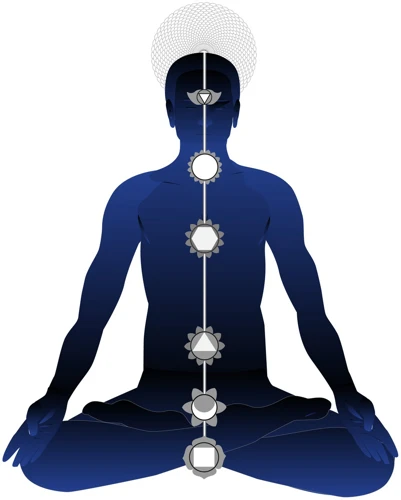
As with any spiritual practice, there are challenges and potential risks associated with kundalini awakening through tantra. These challenges can manifest in a variety of ways, both physical and psychological, and can be difficult to navigate without proper guidance and support. It’s important to approach kundalini awakening with an open mind and a sense of curiosity, but also a healthy dose of caution and respect for the power of the practice. In the following section, we’ll explore some of the challenges that practitioners may encounter during kundalini awakening and how to navigate them with grace and awareness.
Kundalini Syndrome
Kundalini awakening can lead to a range of symptoms collectively known as Kundalini syndrome. This syndrome can manifest in a variety of ways and can cause significant distress to those who experience it.
Physical Symptoms:
Some physical symptoms associated with Kundalini syndrome include tremors, muscle spasms, and gastrointestinal issues. Additionally, individuals may experience changes in their sleeping patterns, such as insomnia or the need for less sleep than usual.
Psychological Symptoms:
Kundalini syndrome can also manifest in a variety of psychological symptoms. These symptoms can include anxiety, depression, and feelings of detachment from reality. In some cases, individuals may also experience psychosis, hallucinations, or other mental health issues.
Spiritual Symptoms:
Kundalini awakening can also lead to a range of spiritual symptoms, including feelings of unity with the universe, enhanced intuition, and heightened awareness of the self and others. However, these spiritual experiences can also be overwhelming and cause distress in some individuals.
It is important to note that not everyone who experiences Kundalini awakening will develop Kundalini syndrome. For those who do experience symptoms, it is important to seek support and guidance from an experienced practitioner who can help navigate these challenging experiences.
Treatment:
There is no one-size-fits-all treatment for Kundalini syndrome, and treatment options will vary depending on the individual’s specific symptoms and needs. Some individuals may benefit from talk therapy or medication, while others may find relief through spiritual practices or supportive therapies like acupuncture or massage.
Prevention:
While it may not be possible to prevent Kundalini syndrome entirely, there are steps individuals can take to minimize their risk of experiencing symptoms. Practicing self-care, developing a regular meditation or yoga practice, and seeking guidance from an experienced practitioner can all help support healthy Kundalini awakening and minimize the risk of developing symptoms.
Psychological Challenges
During a Kundalini awakening, individuals may encounter a range of psychological challenges that can be confusing and overwhelming. It’s important to approach these challenges with care and self-compassion.
1. Emotional Turmoil: As the Kundalini energy travels up the spine, it can activate unresolved emotions and traumatic experiences. This can lead to intense emotional turmoil, including feelings of anxiety, depression, and fear.
2. Increased Sensitivity: Kundalini awakening can also increase an individual’s sensitivity to their environment and the emotions of others. This heightened sensitivity can feel overwhelming and lead to emotional exhaustion.
3. Confusion and Disorientation: The spiritual and energetic changes that occur during Kundalini awakening can be intense and disorienting. Individuals may experience a sense of confusion about their identity, purpose, and life path.
4. Dissociation: Some individuals may experience a sense of detachment from their body or the physical world during a Kundalini awakening. This dissociation can feel unsettling and can lead to feelings of disconnection and isolation.
5. Insomnia: The energetic shifts that occur during Kundalini awakening can lead to changes in sleep patterns, including insomnia. This can lead to physical and mental fatigue, which can exacerbate other psychological challenges.
It’s essential for individuals to seek support from a qualified practitioner or therapist who understands the complexities of Kundalini awakening and can help manage these psychological challenges in a safe and effective way.
Physical Challenges
During the process of Kundalini awakening, one may experience numerous physical challenges. These may include:
- Insomnia: Many people struggle with sleep disturbances during Kundalini awakening. This could manifest as difficulty falling or staying asleep, or frequent waking throughout the night.
- Fatigue: Despite experiencing increased energy levels, one may also feel fatigued or exhausted during the day. This could be due to the body adapting to a new level of energy, or an increase in physical activity levels.
- Physical Sensations: One may experience a variety of intense physical sensations during Kundalini awakening. This could include tingling, vibrations, or heat sensations in different parts of the body.
- Pain: The process of Kundalini awakening can also be painful. This could manifest as muscle soreness or tension, headaches, or even sharp, shooting pains in different parts of the body.
- Changes in Appetite and Digestion: Kundalini awakening can also affect the digestive system. Some individuals may experience changes in appetite, while others may struggle with digestive issues such as constipation or diarrhea.
- Changes in Sexual Function: Kundalini awakening can also disrupt sexual function. Some may experience a loss of libido, while others may experience increased sexual energy or changes in orgasmic responses.
It is important to note that these physical challenges are not necessarily negative side effects of Kundalini awakening, but rather an indication that the body is undergoing significant changes. However, if any physical discomfort becomes too intense, it is important to consult with a medical professional to rule out any underlying medical conditions.
Spiritual Challenges
During Kundalini awakening, the individual may also encounter certain spiritual challenges. These challenges can be difficult to navigate and require a deeper level of self-awareness and introspection. Some of these challenges include:
- Loss of Sense of Self: As the Kundalini energy rises and the individual experiences union with the divine, they may lose their sense of self as a separate entity. This can be a jarring experience, and the individual may struggle to integrate this new perspective into their daily life.
- Existential Crisis: The awakening of Kundalini energy can also bring existential questions to the forefront of the individual’s mind. They may begin to question the purpose of their existence, the nature of reality, and the role of the divine in their life.
- Feeling Overwhelmed: The intensity of the Kundalini awakening process can be overwhelming, leading to feelings of anxiety and even panic. The individual may feel like they are losing control and struggle to find a sense of calm amidst the chaos.
- Spiritual Ego: As the individual experiences profound spiritual experiences, they may develop a spiritual ego, where they believe they are somehow superior to others because of their spiritual experiences. This can lead to feelings of isolation and disconnection from others.
- Integration: Finally, the individual may struggle to integrate the insights and experiences gained during the Kundalini awakening process into their daily life. This can be a lifelong process and require ongoing self-reflection and introspection.
It’s important to approach these spiritual challenges with compassion and an open mind, recognizing that they are a normal part of the Kundalini awakening process. Working with a skilled practitioner can be helpful in navigating these challenges and learning how to integrate spiritual insights into daily life.
Tantra Practices for Safe and Effective Kundalini Awakening
If you are interested in practicing Tantra to awaken your Kundalini energy, it is important to approach the practice with caution and respect. Due to the powerful nature of Kundalini, it is essential to follow certain guidelines to ensure a safe and effective experience. In this section, we will explore some important measures to take when practicing Tantra for Kundalini awakening. By following these guidelines and incorporating self-care practices, you can reap the benefits of a successful Kundalini awakening while minimizing potential challenges and risks.
Getting Guidance from an Experienced Practitioner
One of the most important things to keep in mind when undertaking Tantra practices for Kundalini awakening is the need for guidance from an experienced practitioner. While it may be tempting to try these practices on your own, attempting to awaken Kundalini energy without the proper guidance can be dangerous and lead to serious health complications.
What an experienced practitioner can offer:
| 1. Safety | An experienced practitioner can help you take the necessary safety precautions and identify potential risks before you begin your practice. Without proper guidance, you may expose yourself to dangers that you’re unaware of. |
| 2. Personalized guidance | Every individual is different, and therefore, the way they experience Kundalini awakening can differ as well. An experienced practitioner can offer personalized guidance based on your unique body and mind, helping you avoid any adverse reactions. |
| 3. Expertise in advanced practices | Experienced practitioners can guide you through advanced Tantra practices that require a deeper understanding of the spiritual principles involved. This level of expertise can assist in avoiding any unexpected reactions, while also ensuring that the practices are conducted safely and effectively. |
| 4. Support and encouragement | Kundalini awakening can be an intense and transformative experience, and it can be challenging to deal with on your own. Receiving support and guidance from an experienced practitioner can make the process less overwhelming, providing you with the encouragement you need to continue your practice. |
In essence, working with an experienced practitioner is an invaluable asset when it comes to safely and effectively awakening Kundalini energy through Tantra practices. By partnering with someone who has the knowledge, skills, and expertise to guide you in your practice, you can avoid potential risks and unlock the incredible spiritual benefits that Tantra can offer.
Listening to Your Body
When practicing Tantra for Kundalini awakening, it is important to listen to your body. Kundalini energy is a powerful force that can cause intense physical, emotional, and spiritual sensations. It is essential to approach the practice with caution and respect for your body’s limits. Here are some essential tips for listening to your body during the practice:
- Start Slow: It is important to start slowly and gradually build up your practice. Do not push yourself to do too much too soon, as this can cause unnecessary strain on your body and lead to injury. Begin with simple techniques like breathwork and meditation and gradually incorporate more advanced practices as you become more comfortable with the process.
- Pay Attention to Pain: Pain is a sign that something is wrong. If you experience pain in any part of your body during the practice, stop immediately and seek medical attention if necessary. Do not try to push through the pain, as this can cause further harm to your body.
- Observe Your Emotions: Kundalini awakening can also manifest as intense emotional experiences. It is important to be aware of your emotions and acknowledge their presence without judgment. If you feel overwhelmed or uncomfortable, take a break from the practice and engage in self-care activities like taking a warm bath or spending time in nature.
- Rest and Rehydrate: Kundalini awakening can be exhausting both physically and mentally. It is important to rest and rehydrate after each practice session. Get plenty of sleep, eat nourishing foods, and drink plenty of water to support your body through the process.
By listening to your body and paying attention to its needs, you can ensure that your Kundalini awakening practice is safe and effective. Remember to approach the practice with respect and caution, and always seek guidance from an experienced practitioner when necessary.
Practicing Regularly
Regular practice is essential for safely and effectively awakening and experiencing the effects of Kundalini energy through Tantra practices. Some ways to ensure consistent practice include:
- Scheduling: Set aside time each day, even if it’s just a few minutes, to practice Tantra. Make it a priority and stick to a routine.
- Start Small: Don’t overwhelm yourself with long, complicated practices at first. Begin with simpler techniques and gradually build up to more advanced practices.
- Be Patient: Kundalini awakening and the effects of Tantra practices take time to develop. Don’t expect immediate results and understand that progress can be slow but steady.
- Stay Committed: Don’t give up if you miss a day of practice or if progress feels slow. Stay committed to the process and the practice will become more natural and fulfilling over time.
- Stay Accountable: Consider finding a practice partner or seeking guidance from an experienced Tantra practitioner to help stay accountable and motivated in your practice.
By practicing Tantra regularly and consistently, individuals can experience the full benefits of Kundalini awakening and develop a deeper connection with themselves and the world around them.
Incorporating Self-Care Practices
As you incorporate Tantra practices for safe and effective Kundalini awakening, it is crucial to focus on self-care practices to manage the Kundalini awakening symptoms. Self-care practices help in maintaining the balance of mind, body, and spirit.
Here are some self-care practices to integrate into your Kundalini awakening journey:
- Healthy Eating: Eating a balanced and nutritious diet is crucial for your overall health and well-being. A healthy diet can help in grounding your energy and reducing the intensity of Kundalini awakening symptoms, such as anxiety and restlessness.
- Regular Exercise: Engaging in regular exercise and physical activity such as yoga or Tai Chi can help in calming the mind and releasing any pent-up energy. Exercise can also help in strengthening and balancing the physical body, which is essential during Kundalini awakening.
- Journaling: Journaling can be a powerful tool for self-reflection and introspection during the Kundalini awakening journey. Writing down your thoughts and emotions can help in gaining clarity and insight into your experiences.
- Mindfulness Practices: Practicing mindfulness through meditation or other mindfulness practices can help in cultivating a sense of calmness and presence. Mindfulness can also help in managing severe Kundalini awakening symptoms, such as hallucinations or psychosis.
- Rest and Relaxation: Getting enough rest and relaxation is essential during Kundalini awakening. It is vital to get enough sleep each night and take time to relax during the day. You may also want to consider taking frequent breaks during your practice sessions to rest and recharge.
Incorporating these self-care practices into your Kundalini awakening journey can help in creating a safe and supportive environment for your practice. Remember to listen to your body and take care of yourself throughout this transformative experience.
Conclusion
In conclusion, the practice of tantra can have significant impacts on the awakening of kundalini energy within the body. Different types of tantra practices, such as mantra, meditation, breathwork, and rituals, can all contribute to the raise of body temperature, sensations in the spine, high energy levels, and visions and hallucinations that are often associated with a kundalini awakening.
However, as with any spiritual practice, there are also potential challenges to be aware of during this process, including the kundalini syndrome, emotional and physical challenges, and spiritual challenges.
To support a safe and effective kundalini awakening, it is important to seek guidance from an experienced practitioner, listen to your body, practice regularly, and incorporate self-care strategies into your routine.
Ultimately, undergoing a kundalini awakening can be a transformative and life-changing experience, but it is important to approach the practice with caution and respect for the power and complexity of the kundalini energy. With careful attention and dedication, the practice of tantra can unlock new levels of spiritual insight and personal growth, leading to a deeper and more fulfilling way of life.
Frequently Asked Questions
What is the ultimate goal of Tantra practices?
The ultimate goal of Tantra practices is to achieve spiritual enlightenment and union with the Divine.
How does Kundalini energy relate to Tantra?
Kundalini energy is a central concept in Tantra, as it represents the dormant energy within each individual that can be awakened and harnessed to achieve spiritual growth.
What are some common types of Tantra practices?
Some common types of Tantra practices include mantra, yantra, and mudra practices, Tantra meditation, Tantric breathwork, and Tantric rituals and ceremonies.
What are some of the effects of Tantra practices on Kundalini awakening symptoms?
Some of the effects of Tantra practices on Kundalini awakening symptoms include raised body temperature, sensations in the spine, high energy levels, and visions or hallucinations.
What is Kundalini Syndrome?
Kundalini Syndrome refers to a set of symptoms that can occur during the process of Kundalini awakening, including physical, psychological, and spiritual challenges.
What are some of the physical challenges of Kundalini awakening?
Physical challenges of Kundalini awakening may include muscle spasms, digestive issues, and changes in appetite or sleep patterns.
How can a practitioner ensure safe and effective Kundalini awakening?
A practitioner can ensure safe and effective Kundalini awakening by seeking guidance from an experienced practitioner, listening to their body, practicing regularly, and incorporating self-care practices.
What are some self-care practices that can aid in Kundalini awakening?
Self-care practices that can aid in Kundalini awakening include regular exercise, healthy eating habits, adequate sleep, meditation, and other stress-reducing activities.
What are some psychological challenges of Kundalini awakening?
Psychological challenges of Kundalini awakening may include anxiety, depression, or feelings of disconnection and isolation from others.
How can one determine if they are experiencing Kundalini awakening?
Common signs of Kundalini awakening include intense spiritual experiences, physical symptoms such as heat or pain, and heightened sensitivity to the environment and others.

